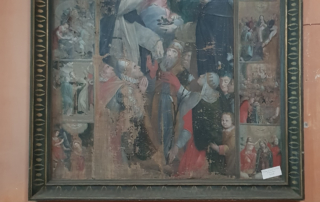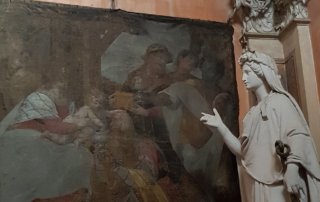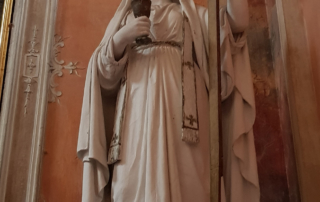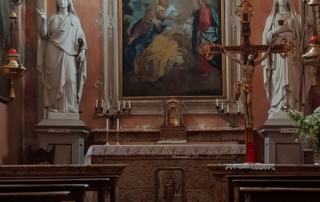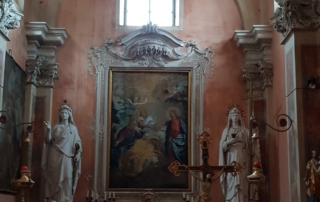PIETRO PAGANI
Inside you can find the copies of Pagani’s most important works: the two statues representing Hope and Religion.
Pietro Pagani was a native of Claino who studied and worked in Milan. His skills were already emerged as he trained at the Brera Academy and were refined when working in Pompeo Marchesi’s studio, one of the best sculptors of the period.
Indeed, he later became Marchesi’s right-hand man. Pagani received various awards including the gold medal, the highest honor awarded by the Brera Academy and only awarded to the best artists.
Among Pagani’s most important works are two statues representing Hope and Religion which can be found in the church of Castrezzato (Brescia-Italy), and copies of which can be admired in the small church of San Giuseppe in Claino.
Other works include the Saints Astanzio and Antoniano in the church of Vigonzone, a high gypsum relief detailing an episode from the Iliad at the Sforzesco Castle and many sculptures in the cathedral of Milan.
Pagani’s greatest masterpiece was his figure of “Eve after sin” exhibited at the New York Expo in 1853. Being exhibited at the New York Expo gave the artist an honorable mention, placing him among the best sculptors of his period.
After his death, his studies, drawings and models were sent to Claino, but tragically sank on route in Lake Como, as bad weather conditions suck the boat transporting the works. His memory is honoured by a gravestone placed on his paternal home in Claino.

